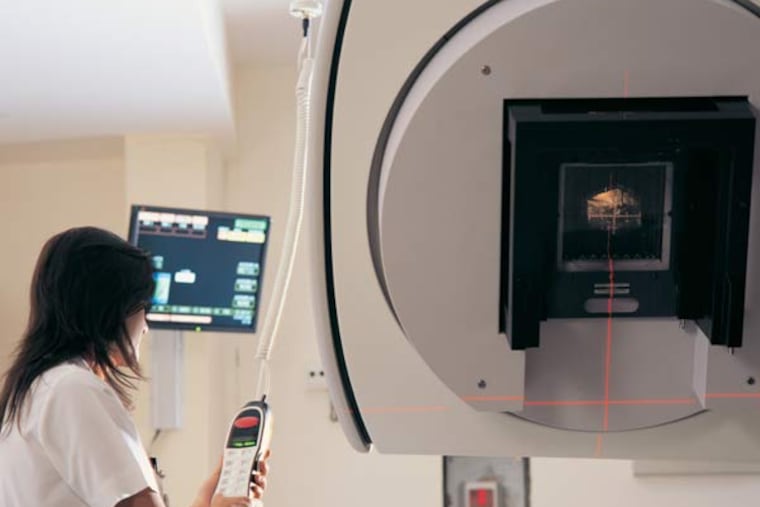Check Up: A shorter course of radiation
Most U.S. women who opt for lumpectomy and radiation to treat early-stage breast cancer get irradiated for twice as many weeks as necessary, adding to the cost and inconvenience of the therapy, according to a University of Pennsylvania analysis.

Most U.S. women who opt for lumpectomy and radiation to treat early-stage breast cancer get irradiated for twice as many weeks as necessary, adding to the cost and inconvenience of the therapy, according to a University of Pennsylvania analysis.
High-qual-ity studies have shown that just three weeks of a newer, higher-dose type of radiation are as safe and effective as six to seven weeks of conventional radiation. In 2011, radiation oncology guidelines endorsed the shorter course of "hypofractionated" therapy for lumpectomy patients over age 50.
Yet only about a third of such women got it in 2013 - up from about 11 percent in 2008, the researchers found using insurance claims from health plans covering 9 million women.
The study didn't delve into why hypofractionated radiation course is rarely prescribed, except to say "radiation oncologists have expressed apprehension about the possibility of long-term toxic effects."
But senior author Ezekiel J. Emanuel believes the real problem is the payment structure: Radiation oncologists can bill more for doing more treatments.
"There is no financial incentive to recommend shorter-duration treatment," said Emanuel, a breast oncologist, ethicist, and health policy expert at Penn.
The study, published this month in the Journal of the American Medical Association, was led by Penn radiation oncologist Justin Bekelman.
The study found that among women under 50 - for whom hypofractionated radiation is permitted but not endorsed by the radiologists' group - only 21 percent received it in 2013, up from 8 percent in 2008.
The abbreviated radiation therapy reduced insurers' total spending per patient in the year after diagnosis by 10 percent, from $31,640 to $28,747.
While patients didn't see any reduction in out-of-pocket expenses, they may have had "indirect savings and productivity benefits" in the form of less time away from work and home, the researchers wrote.
Other countries are ahead of the U.S. in embracing the shorter radiation therapy. In Ontario, Canada, 71 percent of suitable women received it in 2008, the study noted.
In the U.S., the Choosing Wisely initiative, aimed at reducing wasteful health care, last year encouraged physicians and lumpectomy patients to discuss the option of shorter radiation.
215-854-2720
@repopter